Blushing brides used to come to their new marriages with a hope chest and a trousseau – a collection of the basic necessities for setting up a new household. It occurred to us that dogs should come to their new homes with a trousseau, too – containing everything dog and owner need to lay the foundation for a successful lifetime relationship. We put our minds to the task, and came up with the following collection of items that should be in every dog owner’s hope chest.
MANAGEMENT TOOLS…
Crate
The crate is your dog’s den, her safe haven, her very own private spot, and when you travel, her home away from home. When properly introduced using positive methods, most dogs love their crates.

The crate is an indispensable behavior management tool; it facilitates housetraining and prevents puppy misbehavior by keeping your dog safely confined when you’re not there to supervise. It allows you to sleep peacefully at night and enjoy dinner and a movie without worrying about what the pup is destroying. Regular crates come in either wire or plastic/fiberglass models. Once a dog is crate-trained, one of the collapsible portable crates is also a very handy accessory.
For more information, see “Crate Training Made Easy” and “Have Crate, Will Travel,” WDJ August 2000.
Tether
A training and behavior management tool, not for long-term restraint or outdoor “chaining,” the tether is a short (about four feet in length) plastic-coated cable with sturdy snaps at both ends. One end is snapped onto the dog’s collar, and the other is snapped onto an eyebolt screwed into a wall or beam in a convenient, comfortable place.
A dog can chew the plastic coating off of a cable, but can’t chew through it (thus rewarding himself for his efforts). Also, because of a cable’s resistance to twisting or coiling, it’s almost impossible for your dog to get wound up, or for the cable to kink, unlike a chain.
Tethers are intended to temporarily restrain a dog for relatively short periods of time in your presence. They should not be used as punishment, or to restrain a dog for long periods in your absence. A tether can be used as an aid in a puppy supervision and housetraining program, and as a time-out to settle unruly behavior. A tether is also useful for teaching your dog to sit politely to greet people, and to help her learn long-distance “Downs.”
For more information, see “Tethered to Success,” April 2001.
Puppy Pen/Exercise Pen
The puppy or exercise pen is another extremely useful management tool. It expands the “den” concept of a crate to a slightly larger area, giving a pup more room to stretch her legs, but still keeping her in a safe, confined area.
Most pens found on the market are collapsible and portable, and usually consist of six or eight two-foot wide panels anywhere from two to four feet high. For lively pups who can scale the pen fence (usually Jack Russell Terriers), some pens come with a wire top.
Set the pen up in your living room or den, and plop the pup in it when you want to give her the freedom to move around but don’t want to have to keep your eye on her every second. Tarps and newspapers can protect rugs and floors from pups who aren’t yet fully housetrained, and the relatively small space will still help promote a pup’s clean den instincts. The pen is also an alternative for pups who must be left home alone for longer periods than they can “hold it” in a crate.
For more information, see “Getting Off to the Right Start,” January 1999.
Seat Belt
Nothing makes us hold our breath like the sight of an unruly dog bouncing around the seats of a moving vehicle. We have included a seat belt in our trousseau as an alternative to the crate for safe canine car travel. Some dogs don’t crate well, some cars are too small to accommodate crates, and some people like to let their dogs look out the windows. Slipping your dog into a harness and using one of the many car restraints that fasten to your car’s seat belts will keep her safe, and safely away from the driver. Remember that airbags can be hazardous to dogs, especially small ones; the back seat is the best bet for the traveling hound.
WDJ reviewed and offered sources for seat belts in “Safest Canine Seat Belts,” May 2001.
TRAINING TOOLS…
Leash
A leash is a must-have for the hope chest. No matter how well-trained your dog, there are times when she must be leashed, such as walking down a busy street, in the vet hospital, and anywhere a leash law is in effect.
Bright-colored designer nylon leashes are appealing and fine for the trained dog, but can burn your skin if your dog pulls. Plain leather and cotton canvas are softest on your hands, and the best choice for a dog-in-training’s basic leash wardrobe. The “hands-free leash” is a nifty innovation, especially if you have strollers to push, bags to carry, or just want your hands free while you walk with your pal. Retractable leashes have limited application; they should be used only in wide-open spaces, away from other dogs and people, after your dog has been taught to walk politely on a leash. Chain leashes aren’t even worth discussing!
Collar and Tags
Your dog’s collar is like a wedding ring – the endless circle that symbolizes your never-ending relationship. You show your love for your dog by giving her a collar (and using a training method) that won’t inflict pain – a basic flat or rolled nylon, cloth, or leather collar fastened with a snap or a buckle. Of course, you must also attach an ID tag and license to the collar – her ticket home should she ever be separated from you.
WDJ reviewed identification tags in “What a Good ID!” October 2001.
Clicker
Inexpensive, small, ridiculously simple, the clicker is our nomination for the best end-of-the-century training tool. This insignificant-looking gadget has led the dog training profession into the modern world of humane, positive training.
Properly used as a reward marker, the clicker significantly enhances your communication with your furry friend, and speeds up the training process. It won’t take up much room in the hope chest, but it will hold a prominent place in your training tool kit.
WDJ reviewed clickers in “Pickin’ Clickers,” March 2001.
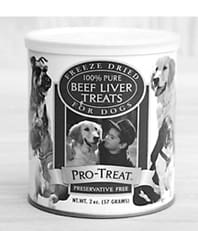
Treats/Rewards
A clicker, of course, is nothing without an accompanying reward. You can never have enough rewards in the trousseau! We use treats as the primary reward to pair with the clicker because most dogs can be motivated by food, and because they can quickly eat a small tidbit and get back to the training fun.
The best treat is whatever your dog likes best, and the best trainers work with a smorgasbord of treat options so that an extra special treat is always available to motivate the stressed or distracted dog, or to reward an extra special accomplishment. The list of possible treats is endless, and includes everything from Cheerios, carrots, and pretzels to hotdogs, string cheese, and roast beef.
Other rewards may include tugging on a tug toy, chasing after a tennis ball, running out the door into the backyard, a walk around the block, a word of praise, or a scratch behind the ear, as long as your dog likes those things.
Long Line
One of the greatest training challenges for some dog/owner teams is making the transition from “come reliably when called in a safe, controlled area” to “come reliably when called regardless of where we are or what other exciting things are happening.” The long line is an ideal training tool to help you meet this challenge.
Long lines are simply long leashes – we have seen models from 10 to 50 feet – that are light-weight but strong, and made with many nylon or poly fabrics. The key is finding one that’s comfortable in your hand, preventing you from getting rope burns while making it easy for you to maintain your grip.
With a long line, you can prevent your dog from being rewarded for inappropriate behavior (running off into the woods), while waiting for her to offer you appropriate behavior (returning to you) so you can Click! and reward her with a very high-value treat. This, of course, is the tried and true recipe for successful positive reinforcement training – rewarding the behaviors you want and preventing your dog from being rewarded for the behaviors you don’t want.
WDJ reviewed long lines in “Know your Lines” and “A Few We Missed,” November 2001. We discussed training your dog to come with a long line in “Long Distance Information,” February 2001.
Head Halter
Not all dogs need a head halter, but for those who do, it’s a valuable addition to the chest.
Head halters come in a few different styles, but they all share the trait that makes them work so well to prevent a dog from pulling: They are worn on the dog’s head (similar to a horse’s halter), where he lacks the power to pull. They should not be confused with muzzles, despite a small similarity; while they have one strap that fastens around the dog’s muzzle, they do not prevent him from opening his mouth to pant, drink, or take a treat.
The determined puller who doesn’t respond well to leash training, the big strong dog in the hands of a not-so-strong owner, and dogs with aggression challenges are all good candidates for the head halter.
WDJ reviewed halters and discussed how to use them in “Head Halters, Right and Wrong,” June 2000.
TOYS…
Kong
No trousseau would be complete without a wide variety of interactive toys, tug toys, chase toys, and chew toys. The perfect toy for your dog depends a great deal on individual canine and human preference, but here are a few that we would bring to our new relationship.
If we could only put one toy in our hope chest, it would be the Kong. The Kong is the sturdiest, most versatile toy we have encountered in a lifetime of dog relationships. It’s a chew-resistant (not chew-proof) rubber, beehive-shaped toy with a hollow center, a small hole at one end, and a larger hole on the other. The Kong can be used “plain” as a toy, but makes an irresistible treat for any dog when stuffed with kibble or treats that are held in place with something healthy and edible like peanut butter, cream cheese, or yogurt.
We have yet to find a dog who couldn’t be enticed to enjoy a properly stuffed Kong. Among other things, it can serve as a chase toy, a crate pacifier, a puppy distracter, a stress reducer, an energy diffuser, a hide-and-seek object, and a barking alternative. You can throw it, stuff it, freeze it, float it, and hide it. It comes in several sizes to meet the needs of dogs of any size, and several colors; the black Kongs are the toughest, for super-chewer dogs.
Balls
Balls and dogs go together like peanut butter and jelly. The variety of balls available ensures that there are plenty for every play style and jaw strength.
Our favorites include the Bully Ball – very sturdy, great for dogs who like to push balls around with noses and paws; the Goodie Ball – small, with a ridged hole in the middle to hold a dog treat; the Karlie Action Ball – a sports ball inside a sturdy nylon strap with rope tugs; the Jolly Ball – rugged polyurethane with a handle – good for dogs who like to lug their ball around with them; the Zap Ball – flashing lights and wonderful electronic noises; and the Kong ball – a very sturdy basic red rubber ball. There are tons more balls, of course, but even the humble tennis ball keeps many dogs happy and well exercised. There’s no excuse to not have at least a couple of balls in the toy box!
For more information, see “Gotta Lotta Balls,” August 2001.
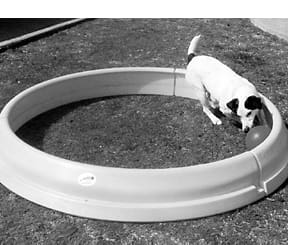
Interactive Toys
These are toys that require your dog to do something to make the toy work. They are designed to keep your dog’s brain, mouth, and body occupied productively rather than destructively.
Topping this list are the Buster Cube (a hollow cube with a hole in it) and the Roll-A-Treat Ball (a hollow sphere with a hole in it) that you fill with your dog’s kibble and let him push around the floor to make the treats fall out. Another great new interactive toy is the PitBall – a circular plastic rim within which the ball-obsessed dog can pursue the object of her obsession to her heart’s content without worrying about losing it under the sofa. Keep your eyes open for other interactive toys to add to the hope chest. The more you keep your dog’s mind and body occupied the better behaved she’ll be, and the more solid your relationship.
For more information, see “Terrific New Toys,” June 2001 and “Gotta Lotta Balls, August 2001.
Fetch Toys
We suspect that as long as humans have had relationships with dogs, humans have been throwing things for dogs to fetch. Dogs who love to fetch never seem to tire of the game, and a new fetch toy is cause for celebration. There are fetch toys that float, for the Mark Spitz’s of the canine world; fetch toys that fly, for the Ashley Whippet wannabes; rubber fetch toys; wooden fetch toys; and for dogs with tender mouths, plush disc-shaped fetch toys. Caution: Not all fetch toys hold up as chew toys. Put fetch toys away when you are not supervising your dog.
For more information, see “A Fetching Dilemma,” September 1999, “Does Your Dog ‘Get It’,” September 1999, and “Terrific New Toys, June 2001.
Tug Toys
Contrary to some trainer’s opinions, we believe that tug o’ war, played with proper rules, is a great game. Most dogs love to play tug, it’s a good way to use up excess energy indoors on a rainy day, it can help teach your dog good mouth manners, and it provides a productive outlet for those family members who want to play rough physical games with Fido.
However, the right tug toy is an imperative accessory to safe tugging – long enough to keep teeth far away from skin, inviting for the dog to put her teeth on her end of the tug, and with a comfortable handle on the other end so the human player can keep his grasp and win the war most of the time (an important tug rule).
For more information, see “Play (and Train) by Tugging,” March 1999.
CLEAN-UP…
Grooming tools
Of course, every bride comes to her new home with a well-equipped toilette, and your dog should be no different. Make sure you leave space in the hope chest for combs, brushes, shampoo, scissors, clippers, cotton balls, toothbrushes, nail trimmers or grinders, and whatever other grooming accessories your dog might need. The array of grooming tools can be confusing, so be sure to find the right ones for your dog. If you’re not sure, ask your local groomer, veterinarian, or dog trainer for grooming tips.
Cleaning
In long-lasting relationships, partners accept their loved ones’ imperfections. Let’s face it, we love our canine companions, but they can be messy! Dog hair, poop, pee, and occasionally, blood or vomit are facts of life in the dog-owning household, and the wise human is prepared to deal effectively with these doggie by-products. Clothes brushes, extra-strength vacuum cleaners, enzyme-based waste removers, and sturdy poop bags and scoopers are dog-owning facts of life.
WDJ reviewed cleanup solutions in “Pees on Earth,” January 1999; dog hair removal tools in “Hair Today, Gone Tomorrow,” April 1999, and poop-pickup bags in “The Scoop on Scoopers,” February 2000.
EDUCATIONAL MATERIALS…
The best dog owners I know find room in their hope chests for extensive libraries, from obscure dog training volumes to the current bestselling videos. Here are our suggestions for books to include:
• Purely Positive Training by Sheila Booth
• The Culture Clash by Jean Donaldson
• How to Teach a New Dog Old Tricks by Dr. Ian Dunbar
• Canine Adventures: Fun Things to Do With Your Dog by Cynthia D. Miller
• The Power of Positive Dog Training by Pat Miller
• The Dog Whisperer by Paul Owens with Norma Eckroate
• Don’t Shoot the Dog by Karen Pryor
• Circles of Compassion by Elaine Sichel
• Guide to Humane Dog Training available from the American Humane Association
• Professional Standards for Dog Trainers: Effective, Humane Principles available from the Delta Society
• Dr. Kidd’s Guide to Herbal Dog Care by Randy Kidd, DVM, Ph.D.
• The Encyclopedia of Natural Pet Care by CJ Puotinen
• Home-Prepared Dog and Cat Diets by Donald R. Strombeck, DVM, Ph.D.
• Give Your Dog a Bone and Grow Your Pups with Bones by Dr. Ian Billinghurst
• Homeopathic Care for Cats and Dogs by Don Hamilton, DVM
When you are trying to educate yourself about new training methods, videos offer an extra level of clarity . . . or at least, they should. There are numerous training videos on the market that suffer from poor production values (bad sound, jerky filming, terrible scripts) and ones that present outdated methods. The following videos were reviewed by WDJ and offer sound training advice and good production values:
• Take a Bow, Wow! by Virginia Broitman & Sherri Lippman
• Take a Bow, Wow! II by Virginia Broitman & Sherri Lippman
• Dancing with Your Dog by Sandra Davis
• Click & Go by Dr. Deborah Jones
• Click & Fetch by Dr. Deborah Jones
• Click & Fix by Dr. Deborah Jones
• Clicker Magic by Karen Pryor
• Puppy Love by Karen Pryor
• 1997 Second Pup-Peroni Canine Freestyle Championship by Ventre Advertising, Inc.
• Dogs, Cats & Kids by Dr. Wayne Hunthausen
All the books and videos mentioned here are available from DogWise, a catalog specializing in dog publications, in Wenatchee, Washington. Call (800) 776-2665 or order online at www.dogwise.com.
The Intangibles
Just like a marriage, the dog-human bond relies on intangibles to make the relationship work. You may not be able to physically place them in your hope chest, but if you bring kindness, compassion, patience, forgiveness, and understanding with you to the relationship, you and your dog should share a lifetime of love and happiness.
-by Pat Miller
Pat Miller, WDJ’s Training Editor, is also a freelance author and Certified Pet Dog Trainer in Chattanooga, Tennessee. She sits on the Board of Directors of the Association of Pet Dog Trainers, and recently published her first book, The Power of Positive Dog Training.


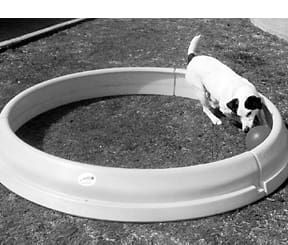
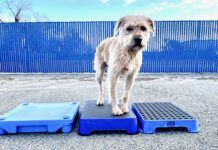
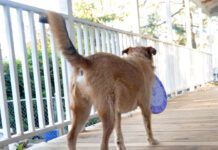
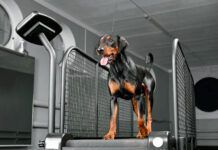

I love this training article thank you for the information…